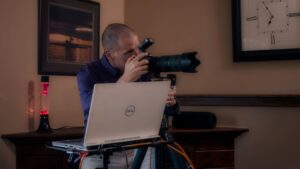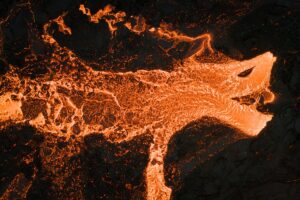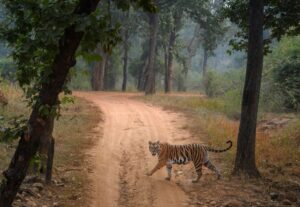
As a creative person, perhaps the most important thing I’ve come to realize in the pandemic is that the type of
Carolyn Chengphotography you do doesn’t fully define you. It’s actually the creative expression that does.
You can also listen to this episode on iTunes, Pocket Casts, Spotify, Castbox, and Google Podcasts.
Elevate your photography journey with us – become a part of our community today!

Today’s episode is all about aerial and fine art photographer Carolyn Cheng. Carolyn works as a Chief Operating Officer in Canada, a job that is completely unrelated to
Carolyn and I talk about:
- The concept of “the feminine sublime” and what it means to her
- How the pandemic has affected her aerial work
- Advice for aspiring and experienced aerial photographers
& much more!
If you need a boost of inspiration – no matter what kind of
Here is a preview of our conversation with Carolyn Cheng.

Q: Your job as a Chief Operating Officer isn’t related to photography at all. How different do you think your relationship with photography would be if you pursued it full time?
Carolyn Cheng: With my immersion in the
My practice has probably evolved during the pandemic. My thoughts could shift over time, but I think it will stay the same. Pre-pandemic, with my practice being much more focused on location-based travel, I could do trips over five weeks of vacation, which is what I had during the year. At home, I would finish with the post processing.

It probably wasn’t as big a part of my life just because there were also so many other things to do in a pre-pandemic life. Today, during the pandemic, I’ve really come to realize how important
Importantly, it has helped me feel like I’m still growing and moving forward in a time when there’s been a lot of things that we can’t do. I’ve always been someone who has really valued continuous improvement. It’s a core part of who I am. I’m really thankful that I’ve had this opportunity to grow through

Q: What do you look for when capturing the feminine sublime in landscape and aerial photography ?
Carolyn Cheng: Maybe to set the stage, I’ll first start with defining the traditional sublime and then explain how the feminine sublime is different because in some ways it’s defined in opposition of it, and then how you see it in my work.
The traditional definition really starts in the 17th century and evolves through history in both the European and American schools. If you’re to condense everything, it’s this notion that nature inspires awe and terror. There’s also a sense of vastness and infiniteness in this dramatic scale. Together, they evoke divinity, the unrepresentable, and/or transcendence. In some representations, there’s also this notion of mankind’s need to dominate his terror.
Now for me, these are really grand concepts. There’s some that I identified with a little bit more and some a little bit less. I really identified with the concepts of awe and the unrepresentable, maybe less so to terror. I really hope that my work evokes an emotional response. For me, divinity and transcendence might feel a little too strong. When I began to learn a little bit more about the feminine sublime, I realized that it focuses a lot more on those dimensions that I identified with, so the unrepresentable or the otherworldly. It doesn’t necessarily seek to master or to dominate, but rather works in this position of respect to nature.

To amplify that, the notion of ecofeminism – which I combine with my feminine sublime – is really a departure from the traditional view of nature in a mechanized world, where its only use is for consumption. Instead, I try to amplify that notion of co-existence between humanity and nature, where we’ve got to develop a much more sustainable relationship. So when you look at my imagery, it really shows the symbiotic parts of nature, where we see the interplay of water, sand, salt, and sediment in a very dynamic form, where patterns are formed, dispersed, and then regenerated. It illustrates those basic cycles as a landscape and its natural state, much more emphasizing that ecofeminism aspect. Because it’s taken from an aerial perspective, people can’t immediately comprehend it so it feels really otherworldly. (Which is the feminine sublime notion.)
It’s always such a surprise and delight for me when people understand that this otherworldly thing that they see and identify with is really just water, sand, salts, or earth. When you focus in close, you can see those details. My work is really about transforming those ordinary natural elements into, hopefully, what people see as beautiful and moving images that give us a sense of the otherworldly. It shifts our perception of what’s possible. My aesthetic tends to be quite organic and lyrical in shape because of the dynamic and ephemeral nature of those landscapes.

Q: What’s something that everyone should know about aerial photography ?
Carolyn Cheng: First, it’s an adrenaline rush and really exhilarating. To see from a different perspective is always so much fun.
Second, I would say it can also be stressful because you only have so much time up there. Often with aerial
In the days or weeks before, I always make sure that the camera and lens combination that I’m going to take up in the air focus at infinity properly and are sharp. The one thing that I like to do is, as we’re going up in the aircraft and before we get to our destination, I just like to take a few test shots and make sure they’re sharp.








